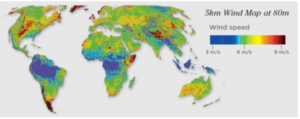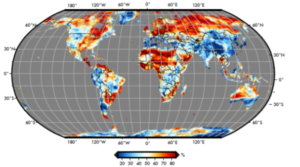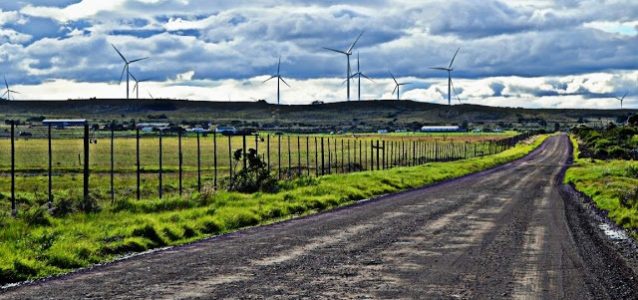“…Of all the forces of nature, I should think the wind contains the largest amount of motive power—that is, power to move things. Take any given space of the earth’s surface— for instance, Illinois; and all the power exerted by all the men, and beasts, and running-water, and steam, over and upon it, shall not equal the one hundredth part of what is exerted by the blowing of the wind over and upon the same space. And yet it has not, so far in the world’s history, become proportionably valuable as a motive power. It is applied extensively, and advantageously, to sail-vessels in navigation. Add to this a few windmills, and pumps, and you have about all. … As yet, the wind is an untamed, and unharnessed force; and quite possibly one of the greatest discoveries hereafter to be made, will be the taming, and harnessing of it.” – Abraham Lincoln, 1860
It’s more than 150 years since Lincoln uttered these prophetic words yet Africa still relies mainly on petroleum imports and hydropower to meet its ever increasing domestic and commercial energy requirements. Less than 40% of its population has access to electricity[1] and the situation is aggravated by over reliance on hydropower which has often been unreliable, especially during dry seasons. The current global quest to reduce environmental impacts associated with fossil fuel use has necessitated considerable research into renewable energy with special emphasis on solar and wind energy. Wind energy generation provides a real opportunity for the continent to meet its energy demands, reduce environmental impacts associated with fossil fuel use and play its role in meeting emission targets set out during COP 21 in Paris. Indeed, at COP 21 several leaders from the continent acknowledged that renewable energy use could be a major player in combatting climate change[2].
“…Some of the sector-wide voluntary domestic measures and actions to address climate change include: Expansion in geothermal, solar, wind and other renewables and clean energy options. Close to two-thirds of our power at present is green. Our 310 megawatt Lake Turkana wind farm will be the biggest such project in Africa.” – President Uhuru Kenyatta – COP21 Address.
Several governments on the continent are already responding positively to wind energy development. They include: [3]South Africa, where estimates show that with the right policies, wind power could provide as much as 20% of the country’s energy demand by 2025, translating into 30,000 MW of installed wind capacity; [4]Ethiopia, where the current installed wind capacity stands at 324MW total, with plans to increase it to 800MW and [5]Kenya where the construction of 310MW Lake Turkana wind farm will supply approximately 18 per cent of the country’s current installed electricity generating capacity.
Figure 1 below shows that Africa has several regions with immense wind energy potential especially around the coasts and in the eastern highlands that either have been or can be utilized for electricity generation.

Figure 1: The Vaisala 3TIER Services global wind dataset[6].
Figure 2 shows that most Global Climate Models (GCMs) predict an increase in annual mean wind speeds in the year 2050 based on the A2 and B1 scenarios. Dark red areas correspond to regions in which most of the models predict stronger surface wind speeds. Conversely, areas of dark blue imply that most of the models predict weaker surface wind speeds. On an annual basis, climate change is predicted to cause stronger surface wind speed values across the continent[7]. This research, though not conclusive, indicate that wind energy investments on the continent are both viable and sustainable given that most wind farms have a lifetime of approximately 25 years.

Figure 2: Percentage of Global Climate Models Showing Increased Annual-Mean Wind Speed Values In 20507.
Africa’s wind energy sector is showing positive development trends, and there is a lot to anticipate in the near future despite the challenges that continue to hinder its optimal growth. They include, but not limited to, lack of proper infrastructure, policies, financing and in some cases lack of political good will.
[1] http://www.worldenergyoutlook.org/resources/energydevelopment/energyaccessdatabase/
[2] http://unfccc.int/meetings/paris_nov_2015/items/9331.php
[3] http://www.gwec.net/wp-content/uploads/2014/10/GWEO2014_WEB.pdf
[4] https://en.wikipedia.org/wiki/Renewable_energy_in_Ethiopia
[6] http://www.vaisala.com/en/energy/Documents/WEA-ERG-3TIER-Global%20Wind%20Dataset.pdf
[7] http://www.3tier.com/static/ttcms/us/documents/NAWP-July08.pdf
